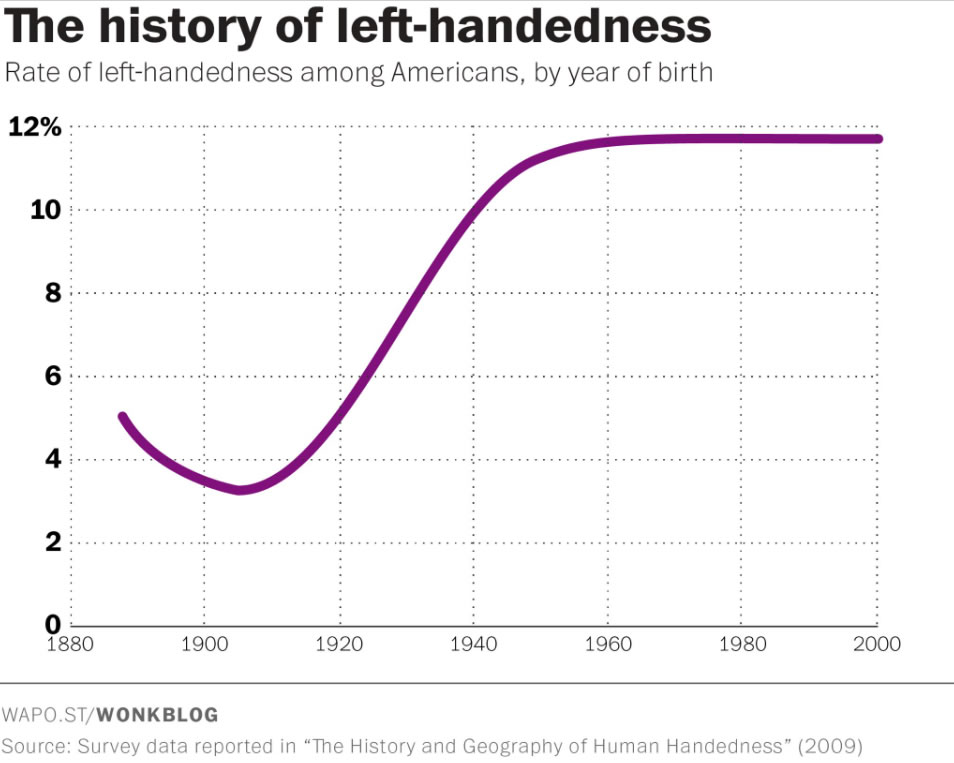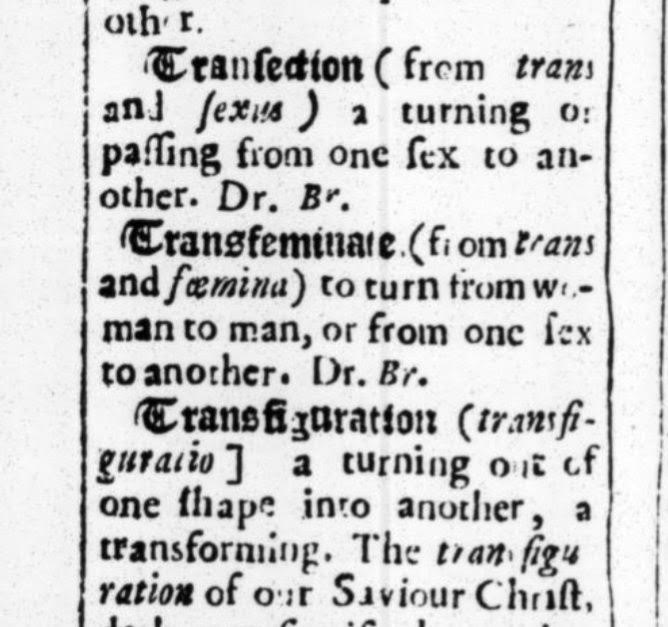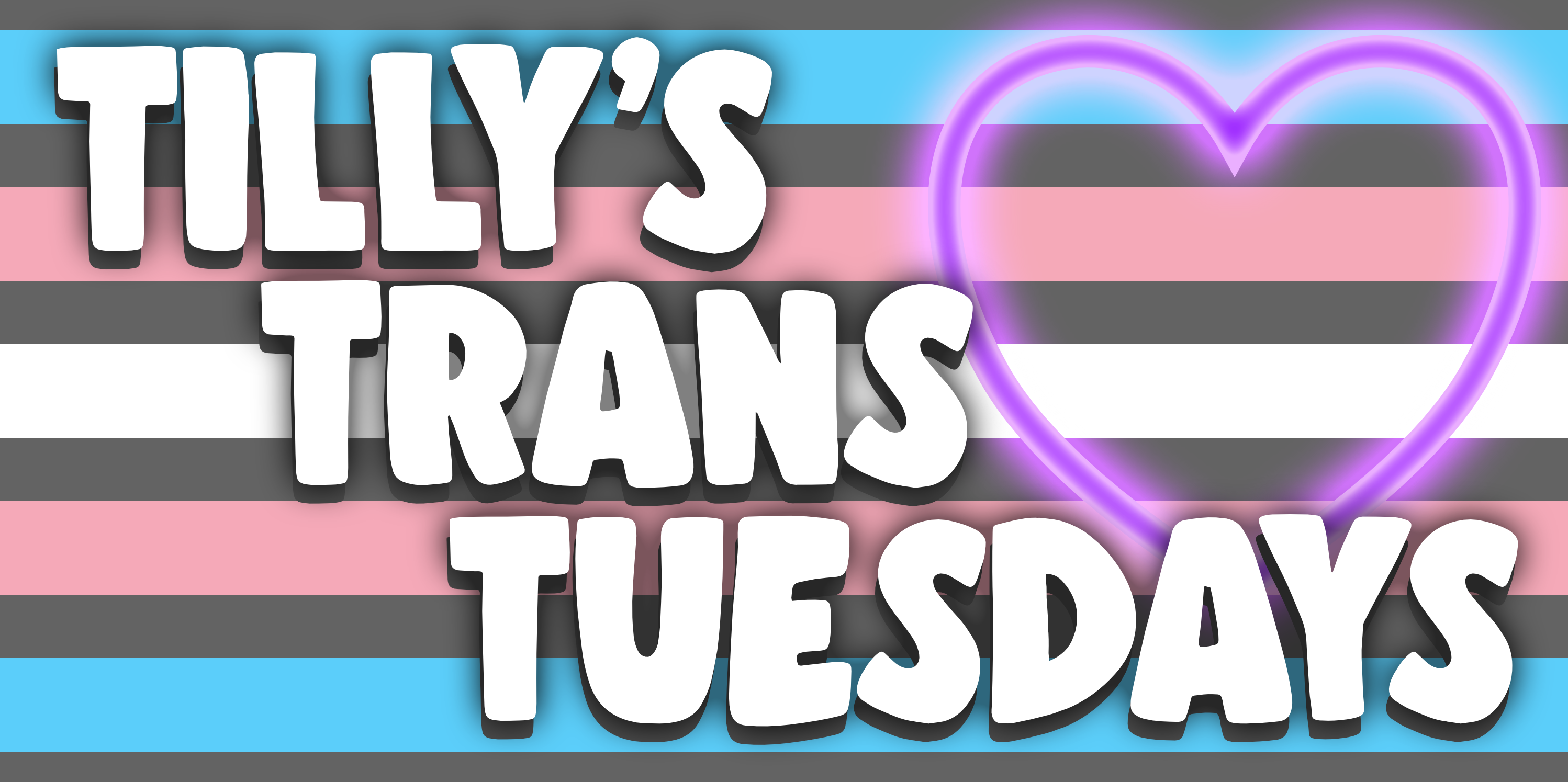Welcome to #TransTuesday! August is Trans History Month, and this week our topic TRANS HISTORY 2: EXAMPLES OF TRANS PEOPLE IN HISTORY.
You’ll first want to start with TRANS HISTORY 1 (how and why we name trans people in history), from last week. It’s especially important because it talks about how vital it is to name trans people in history when we see them, and how our transness has been so often erased. We’re going to talk about some key examples of that erasure in a moment.
Let’s first look at why there seems to be “so many more” trans people now than at any previous point in history. There are two main reasons.
One: as our knowledge and understanding of what it means to be transgender increases, more people will realize that they are trans. I’ve mentioned many times how I didn’t even really know trans was a thing you could BE until well into my adulthood.
How on earth could I have known I was transgender when I’d never so much as heard the word before? Or known there were people like me, trans people, who already existed? Yet that didn’t change the knowledge I had deep down that I was not a boy and was in fact a girl.
This is part of what abhorrent things like “Don’t Say Gay” bills and the banning of queer books are trying to do. If fascists suppress knowledge of our existence, then fewer people know or learn about us, and fewer people can thus identify with us and understand they may be trans too.
But that won’t make trans kids any less trans. My own not knowing I could be transgender did not make me any less trans. It just forced me to live in a broken world, saddled with the pain and misery of dysphoria, thinking there was no way out.
See the trans tuesday on GENDER DYSPHORIA if you missed it, and learn how horrible it was for me to live with it.
And if you’re thinking what an oppressive, painful, impossible-to-live-through scenario that might be, you’re absolutely correct. That’s why accepting trans kids when they tell you who they really are is so vital when EIGHTY-TWO PERCENT of trans people have considered suicide, and forty percent have attempted it. The numbers are even more dire for trans kids, where EIGHTY-SIX percent of them have considered it, and fifty-six percent, OVER HALF, have attempted it.
And it’s not being trans that makes them suicidal, it’s being forced to live a lie and not being supported in being who they truly are that does it. It’s literal torture.
Two: as acceptance of transgender people being just another way for a person to be grows, more people feel like they can come out publicly as trans. And I feel like I need to put “acceptance” in quotes, especially given the current climate.
Again, if you’re wondering if part of the ONSLAUGHT of legislation trying to squash trans people out of existence plays into this, you’re absolutely right.
If bigotry against us is accepted, and in many parts of society it is (even in “liberal” places!), more trans people will be scared to come out. Look at the trans tuesday on TRANS RAGE 2 – CIS APATHY.
Time and again we see evidence that trans people are a group it’s “okay” to discriminate against. Even in good ol’ “liberal Hollywood” you can be an active bigoted transphobe and get rewarded for it.
The fascists came for us and cis people, as a group, did not care. Still don’t! Bigotry against us is accepted. The collective cis population doesn’t show up for us, doesn’t care that our bodily autonomy is being taken away.
Look at people like Dave Chapelle and Ricky Gervais and JK Rowling, making money off of punching down and adding to the oppression and bigotry against us, and THEY KEEP GETTING MORE WORK.
ALL of this adds to making some trans people feel like it’s too painful, too difficult, too risky to come out. And despite all of this, this is still (SOMEHOW??) the most accepting that our society has ever been to trans people.
Well, there might have been a time in the 2010s, when knowledge and acceptance was growing, and before we became fascist Republicans’ latest target, where it felt safer. And so our numbers seemed to rise, and now we see the target on our back growing.
My favorite example of this is this lovely chart of the percentage of the population, over time, that is left-handed.

Being left-handed is just like being trans or cis or gay or straight. We have no control over it, it’s just how we are. So what happened between 1910 and 1960 to make so many more people become left-handed?
As you know nothing makes people BECOME left-handed. But being left-handed was discriminated against and thought to be “evil” (ring any bells?) for a long time in history.
Once the general population realized how utterly wrong that was, MORE PEOPLE CAME OUT AS LEFT-HANDED ONCE IT WAS SAFE TO DO SO.
WHO’D HAVE THUNK???
But being trans, due to our society or personal reasons, is also something that can take some people a long time to figure out. Coupled with both of the instances above is why estimates of how much of the population is trans are likely SEVERELY undercounted.
Present US census data puts us at 1-2% of the population. But that’s only the people out as trans or who know they’re trans, and also feel safe reporting that information on census data. When you account for all the above barriers to our existence and coming out, it’s going to be much higher (which seems to be happening with Gen Z, and how many of them say they are not cisgender). If I had to guess, I’d probably put the total trans and nonbinary part of the population at around 10%, but we’re never going to truly know that number without a fully trans-accepting society.
So due to lack of knowledge/terminology, and lack of acceptance (both societal and self-acceptance), spotting trans people in history isn’t always cut and dry. Sometimes we have to infer things from context clues.
Did you know that one of the reasons we don’t have a lot of knowledge of trans people in the past, or the reason people in the past didn’t have the terminology, is because information about us was routinely destroyed, suppressed, or outright intentionally misinterpreted?
Magnus Hirschfeld had one of the largest and most extensive collections of books and information and research on trans people. He ran a clinic and helped trans women transition. In Germany pre-WWII!
And guess (oh can you guess?) what one of the nazis’ earliest targets was? Do you UNDERSTAND that the rising transphobia and violence in the US from fascists is history repeating itself?
Queer and trans people were targeted and forced into concentration camps by the nazis and are often forgotten about (or intentionally left out of the discussion) entirely.
Good thing the Allies freed everyone who was still alive in the camps! Except did you know THEY DIDN’T? THEY LEFT LGBTQIA PEOPLE IN THE CAMPS AND FREED EVERYONE ELSE. How horrified does that make you?
At the end of the war, when the concentration camps were finally liberated, virtually all of the prisoners were released except those who wore the pink triangle. Many of those with a pink triangle on their pocket were put back in prison and their nightmare continued.
And there’s been active erasure of trans people in the camps, with them being reported falsely as members of their gender assigned at birth. “Earlier histories tended to misgender trans women, labeling them as men. This is odd given that when you read the records of their police interrogations, they are often remarkably clear about their gender identity, even though they were not helping their cases at all by doing so.”
Did you know that? Are you appalled that even the “good guys” aren’t on our side? Are you starting to get the truth of the situation? Welcome to the club. Here’s a good thread for you about the willful ignoring or hiding of trans people in history.
In spite of all that’s stacked against us, trans people have still always existed. Always persisted. So let’s look at some examples of trans people in history. Again, for many we have to use context clues, but you’ll see it’s pretty clear when you pay attention.
Further touching on the topic of the erasure of trans people from history, which I talked about extensively last week as an issue that plagues historians, here’s a prime example with one of my favorite trans people in history, Charles-Geneviève-Louis-Auguste-André-Timothée d’Éon de Beaumont. She’s a trans woman who used brilliance and trickery to get transphobic society to declare her legally a woman by making everyone think she was AFAB and a trans man! GENIUS. A hero. We stan a queen.
And if you want another example of how despite all of that evidence people will go out of their way to say she wasn’t actually a trans woman, look at this excerpt from a book about her, “Monsieur d’Eon Is a Woman” by Gary Kates, from the preface to the Johns Hopkins Paperback Edition. (Alina Boyden gets credit for introducing me to this prime example of shit gone wrong).
The Chevalier d’Eon changed my own ideas about gender. I never thought it possible for an eighteenth-century person to alter the fundamental ways that I view gender roles and gender theory. But he did. I don’t mean that I cross-dress today or live as a woman, but I certainly admire those who do, such as the economic historian Deirdre McCloskey. Before d’Eon, I was a feminist in the sense that I hoped the avenues to power, wealth, and independence once monopolized by men could be extended to women. I married a physician and applauded myself that I was liberal enough to allow her to act like a man. But d’Eon was not a feminist in this sense. He did not simply think that the opportunities accorded to men should be extended to women. He believed that men should live as women.
At first, I thought that d’Eon must have been Europe’s first transsexual, the victim of a disorder that certain psychiatrists label gender dysphoria. I assumed that today he would have been a prime candidate for sex reassignment surgery. Indeed, since the 1920s communities of transsexuals and transvestites have thought of d’Eon as their patron saint. However, several conversations with a psychiatrist who had worked in a gender identity clinic convinced me that d’Eon was not sick. He did not hate himself. He did not hate his body. He did not think that he was trapped in the wrong body. But if d’Eon was not a transsexual, then, well, what was he? Of course, my book argues that d’Eon came to a cognitive decision that it was best for him to live life as a woman. And obviously, as a historian, I became convinced of this argument through reading the archival records that remain today in Paris, London, Tonnerre, and especially at the University of Leeds.
Who says you get to decide??? She didn’t seem “sick enough?” What the fuck! That’s SUCH a transmedicalist view. You don’t have to have gender dysphoria to be trans!! Read up on TRANSMEDICALISM (and WPATH version 1) for more on that.
Check out this passage, still from the preface:
As I grew up in the same 1950s Los Angeles as Virginia Prince, l was aware that I could become Catholic, or even French, that I could take on various roles, identities, sexual orientations, and occupations, but it was clear that I must never seem like a woman. Gay was fine, but woman was THE OTHER. That which I was not. I figured that folks who moved across gender boundaries were sick.
D’Eon’s autobiographical memoirs and essays, filtered through experiences such as the interview with Virginia Prince, taught me that my own upbringing had been narrow and prejudiced insofar as it never gave me the opportunity to express myself as a woman. That such a statement feels bizarre and comical to express makes it no less true. The Chevalier taught me—a late-twentieth-century man—that my refusal to consider womanhood is a bigotry, my hangup. However liberal I think I am, whatever kind of 1970s feminist I think I have become, the story of this man’s chutzpah makes me aware of what is possible for all men.
One of the most important decisions I made writing my book was using the pronoun he for d’Eon, which continually reminds readers of d’Eon’s anatomy, ignoring linguistically his self-fashioning. I would never refer to Virginia Prince as a “he,” and indeed, neither would anyone else who respects members of the transgendered community. But writing about d’Eon is different. Here I felt that I was speaking as a man to other imagined male readers about the choices that were in front of all of us.
Look at this cis dude, patting himself on the back for being so open-minded while ignoring what trans people tell him, so sure that he knows better! Look at him choosing to ignore d’Eon’s pronouns because HE felt that d’Eon had a penis and thus had to be a man, and he wanted to CLAIM WHAT D’EON DID FOR CIS MEN! Claim being trans for cis men? Without calling yourself trans? Like, just… what the actual hell!
Whether through ignorance or malicious intent, Gary Kates chose to erase d’Eon’s transness from history. This is what we’re up against. What we have to work to undo. And so let’s get to work undoing.
If we’re talking about trans people in history, we absolutely have to mention Marsha P. Johnson (1945-1992), an activist who was at Stonewall and was forever leading the charge for queer rights. I hope you’re already familiar with her. She’s an icon, and utterly vital.
One famous example you’ve heard of and probably had no idea was trans… the author of Little Women, Lou Alcott (1832-1888). Despite not having the terminology to identify as transgender at the time, look at this evidence and try and tell me Lou was not transgender.
Here’s Mark and David Ferrow, two trans brothers in the 1930s who had the support of their parents (it seems like a miracle when this happens TODAY, that it happened in the 30s? Extraordinary!) and transitioned in their teens.
There’s the Rev. Dr. Pauli Murray (1910-1985), a priest, an activist, a non-binary/gender fluid/potentially intersex icon. Again, as they did not have the terminology, we cannot be exactly sure how they would identify today, or what pronouns they would use, but it’s very clear they weren’t cisgender.
Here’s Lucy Hicks Anderson (1886-1954), a trans woman who was a philanthropist and activist and ran a bordello! She was cooler than I’ll ever be.
Here’s Roberta Cowell (1918-2011), a trans woman race car driver and fighter pilot! Also so much cooler than I will ever be.
Here’s Wendy Carlos (b. 1939), the film composer who did the scores to A Clockwork Orange, The Shining, and Tron! She also worked with Weird Al! (okay, every trans person in history is cooler than I’ll ever be, I gotta step up my game).
Here’s a paper called, The Trans Middle Ages: Incorporating Transgender and Intersex Studies into the History of Medieval Sexuality.
Did you know there’s compelling evidence that Kurt Cobain was trans? Check out this article about it.
Here’s an article, with a lot of lovely photos, about Casa Susanna, a secret house of trans women in the 1960s. There’s also a documentary about it!
How about an article about Dr. Alan L. Hart (1890-1962), a trans man who saved so many lives because he pioneered detecting tuberculosis with x-rays, all while the world was repeatedly unkind to him.
Even Buzzfeed, of all places, has done an article on trans people in history.
Okay, these are all still fairly recent, I hear you (annoyingly) saying. Can you go back further? Sure! Here’s a lovely article about trans people in the old west!
You may have even heard the big news about Roman emperor Elagabalus (204-222) being a trans woman!
Here’s a thread about Anastasios, a trans man monk in the sixth century, whose gender was affirmed after his death.
Here’s a video about Scythian transgender priestesses from thousands of years ago who may have used urine from pregnant mares, which is high in estrogen, for hormone replacement therapy for trans women! This is what old estrogen pills for HRT were also made from, and why it was called Premarin… PREgnant MARe urINe.
You can read about Sumerian goddess Inanna, who regularly had transgender priestesses back in at least 4000 BC, if not even earlier (Inanna was also known for turning men into women, we love a transgender-affirming goddess).
Here’s a book all about nonbinary folks in history! The Shape of Sex: Nonbinary Gender from Genesis to the Renaissance.
I want to close with another of my favorites, medieval French philosopher Kalonymus ben Kalonymus (1286-1328).
Credit to Rabbi Danya Ruttenberg for first bringing Kalonymus to my attention (this is the second time I’ve mentioned the Rabbi in a trans tuesday, and she’s cis! This is peak allyship.).
This translation of her poem touched me so deeply. It moved me. I can feel that pain. I KNOW that pain. I hope you’ve read everything I’ve linked to, but absolutely you MUST read this.
That is the agony, the despair, the longing of gender dysphoria. How can ANYONE read that and not say Kalonymus ben Kalonymus, living IN THE TWELVE HUNDREDS, was anything other than a transgender woman?
The only way is if you’re actively trying to suppress the knowledge that we have indeed always existed, and being trans is just a normal part of life and the way some people happen to be.
This list is not exhaustive! There’s so, so many more. But hopefully this gets you started on looking for more examples on your own, and when you find them, share them with the world. We need to know, trans and cis alike.
All you have to do is pay attention.
WE’VE ALWAYS BEEN HERE AND ALWAYS WILL BE.
This is who we are.
Tilly Bridges, end transmission.
tillysbridges@gmail.com
ADDENDUM 12/4/24
Look at this excerpt from Glossographia, or, A dictionary interpreting all such hard words of whatsoever language now used in our refined English tongue with etymologies, definitions and historical observations on the same. It was published in SIXTEEN SIXTY-ONE. You can read a digitized version of it here.

ADDENDUM 12/11/24
Here’s a lengthy examination of the life of a trans woman under nazi rule in Germany.

